Are you considering adding a Miniature Pinscher to your family? This breed, often called the “King of Toys,” is a small but mighty dog that is full of energy and personality. Miniature Pinschers are known for their spunky attitudes and playful nature, making them a great choice for those who enjoy an active and lively pet. However, before making the decision to bring a Miniature Pinscher into your home, it’s important to understand their unique needs and characteristics. In this guide, we’ll explore everything you need to know about the Miniature Pinscher breed to help you make an informed decision about whether this is the right dog for you.
Breed Category: Toy
Country of Origin: Germany
Average Size:25-30 cm
Average Weight:3-5 kg
Average Life Span: 12-14 years
Grooming Requirements: Low
Exercise Requirements:Moderate
History and Origin
The Miniature Pinscher, also known as the Min Pin, is a small breed of dog that originated in Germany. Despite its name, the Miniature Pinscher is not related to the Doberman Pinscher, but rather to the Dachshund and the Italian Greyhound. The breed was developed in the 19th century to hunt rats and other small vermin in homes and stables.
The Miniature Pinscher is believed to have descended from the German Pinscher, a larger breed of dog that was used for hunting and guarding. The German Pinscher was crossed with smaller breeds such as the Dachshund and the Italian Greyhound to create a smaller, more agile dog that could hunt rats and other small vermin in tight spaces. The result was the Miniature Pinscher, which was first recognized as a breed in Germany in 1895.
The Miniature Pinscher was brought to the United States in the early 20th century, where it quickly gained popularity as a companion dog. The breed was recognized by the American Kennel Club in 1929, and has since become a popular breed in the United States and around the world.
The Miniature Pinscher is a small, compact dog that stands between 10 and 12 inches tall at the shoulder. It has a short, smooth coat that can be black, red, or chocolate in color. The breed is known for its high energy level and playful personality, and is often described as a “big dog in a small body.”
Despite its small size, the Miniature Pinscher is a sturdy and athletic breed that requires regular exercise and mental stimulation. The breed is also known for its intelligence and trainability, and can excel in obedience and agility competitions.
In addition to its hunting and companion roles, the Miniature Pinscher has also been used as a circus performer and a guard dog. The breed’s small size and high energy level make it well-suited for performing tricks and acrobatics, while its alert and protective nature make it an effective watchdog.
Today, the Miniature Pinscher remains a popular breed around the world, valued for its intelligence, athleticism, and playful personality. While it is no longer used for hunting vermin, the breed continues to excel in a variety of roles, from companion to performer to watchdog.

Size and Breed Category
The Miniature Pinscher is a small breed of dog that is known for its energetic and lively personality. They are classified as a toy breed and typically weigh between 3-5 kg. They have a short, smooth coat that can come in a variety of colours including black, chocolate, and red. Their ears are usually cropped and their tails are docked, although this practice is becoming less common. Despite their small size, they are muscular and athletic dogs that require regular exercise to keep them healthy and happy. They are also known for their intelligence and can be trained to perform a variety of tricks and tasks.
The Miniature Pinscher is a breed that is believed to have originated in Germany, where they were used as rat catchers. They are often compared to the Doberman Pinscher, which is a larger breed that was developed from the Miniature Pinscher. Despite their small size, they are not a delicate breed and can be quite feisty and independent. They are also known for their loyalty and affection towards their owners, although they can be wary of strangers. Overall, the Miniature Pinscher is a lively and spirited breed that is well-suited to life in a small home or apartment.
Fur Length and Colour
The fur of the Miniature Pinscher is short and smooth, with a glossy appearance. The texture of the fur is fine and dense, providing a sleek and elegant look to the breed. The fur is typically uniform in length across the body, with slightly longer fur on the neck and tail. The fur on the ears is also slightly longer, forming a fringe-like appearance. The Miniature Pinscher’s fur comes in a variety of colours, including black and tan, chocolate and tan, and red. The black and tan variety is the most common, with the black fur being the dominant colour and the tan fur appearing on the legs, chest, and eyebrows. The chocolate and tan variety has a rich brown fur as the dominant colour, with tan fur appearing in the same areas as the black and tan variety. The red variety has a deep red fur, with tan fur appearing in the same areas as the other varieties.
The Miniature Pinscher’s fur is easy to maintain, requiring only occasional brushing to remove loose fur and maintain its glossy appearance. The breed does not shed excessively, making it a good choice for those with allergies. The fur provides some protection from the elements, but the breed is not well-suited for cold climates and may require a coat or sweater in colder weather. The Miniature Pinscher’s fur is an important part of its overall appearance, contributing to its sleek and elegant look. The breed’s fur is a defining characteristic, distinguishing it from other small breeds and making it a popular choice for those looking for a stylish and low-maintenance companion.
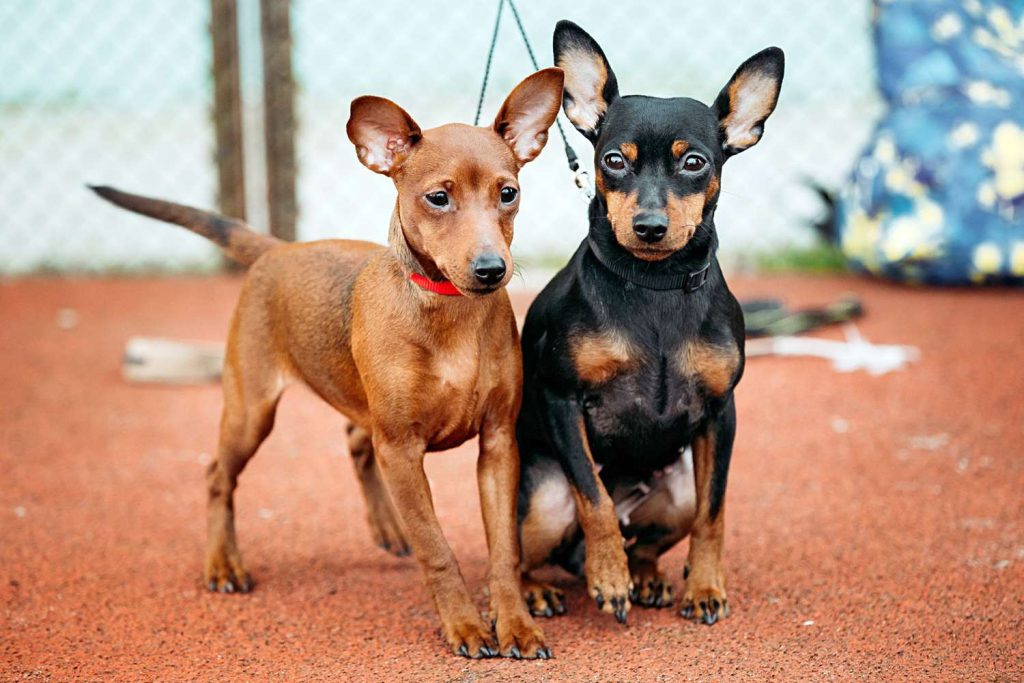
Termperament and Trainability
Miniature Pinschers are known for their lively and energetic temperament. They are highly active dogs that require plenty of exercise and mental stimulation to keep them happy and healthy. These dogs are also very intelligent and curious, which can sometimes lead to mischief if they are not properly trained and socialized. However, with the right guidance and positive reinforcement, Miniature Pinschers can be trained to be well-behaved and obedient pets. They are also very loyal and affectionate towards their owners, making them great companions for those who are willing to put in the time and effort to properly care for them.
When it comes to trainability, Miniature Pinschers are generally quick learners. They are eager to please their owners and respond well to positive reinforcement training methods. However, they can also be stubborn at times and may require a firm and consistent approach to training. It is important to start training and socializing Miniature Pinschers from a young age to ensure that they develop into well-adjusted and well-behaved adults. These dogs also have a strong prey drive and may be prone to chasing small animals, so it is important to teach them appropriate behavior around other pets and wildlife. Overall, with the right training and socialization, Miniature Pinschers can make wonderful pets for those who are willing to put in the time and effort to properly care for them.
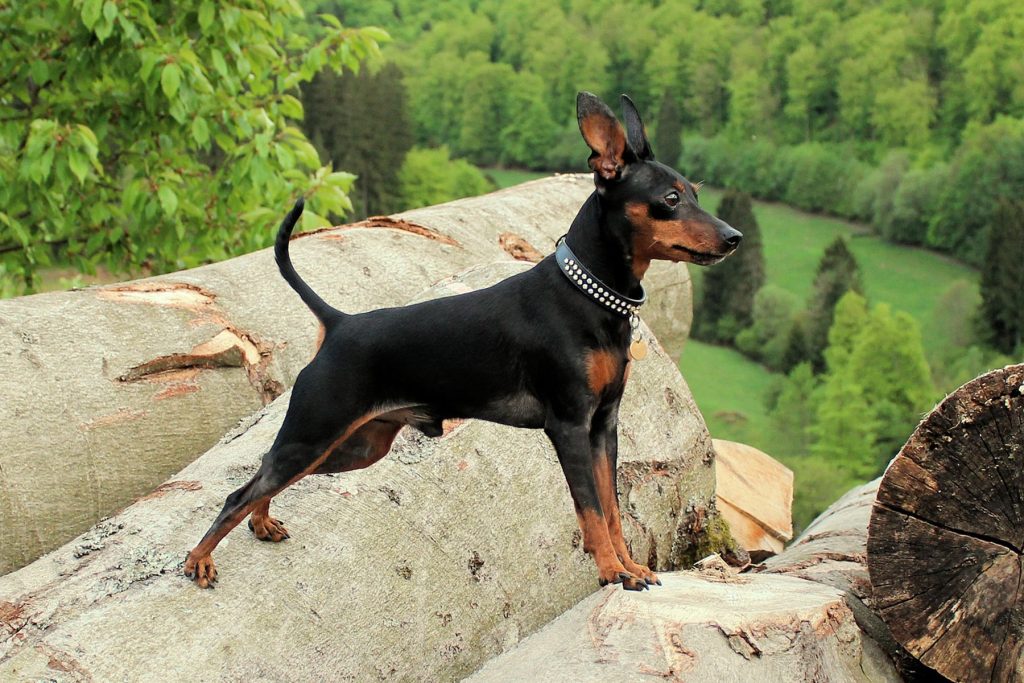
Known Health Conditions
Miniature Pinschers are prone to certain health conditions that owners should be aware of. One of the most common issues is patellar luxation, which occurs when the kneecap dislocates from its normal position. This can cause pain, limping, and difficulty walking. In severe cases, surgery may be necessary to correct the problem. Another condition that Miniature Pinschers are susceptible to is Legg-Calve-Perthes disease, which affects the hip joint. This condition causes the head of the femur bone to deteriorate, leading to pain and difficulty walking. Treatment may involve surgery or medication to manage pain and inflammation.
In addition to these orthopedic issues, Miniature Pinschers may also be prone to certain eye problems. Progressive retinal atrophy is a degenerative disease that can lead to blindness over time. This condition is genetic, so it is important to obtain a puppy from a reputable breeder who screens for this condition. Another eye problem that Miniature Pinschers may develop is cataracts, which can also lead to vision loss. Regular eye exams can help detect these conditions early, allowing for prompt treatment and management.
Openness to Strangers
Miniature Pinschers, also known as Min Pins, have a reputation for being highly sociable dogs. They are known to be very friendly and welcoming towards strangers, often approaching them with a wagging tail and a curious expression. This openness to strangers is a trait that is highly valued by many owners, as it makes them excellent companions for social events and outings. Despite their small size, Min Pins are known for their big personalities and their ability to make friends with just about anyone they meet.
One of the reasons why Miniature Pinschers are so open to strangers is their natural curiosity. They are highly intelligent dogs that love to explore their surroundings and meet new people. This curiosity often leads them to approach strangers with a friendly and inquisitive attitude, eager to learn more about the world around them. Additionally, Min Pins are known for their loyalty and affection towards their owners, which often extends to other people as well. They are highly social animals that thrive on human interaction, and are always eager to make new friends and form new bonds.
Playfulness Level
The Miniature Pinscher is a highly energetic and playful breed of dog. They are known for their lively and spirited nature, which makes them a popular choice for families with children. These dogs love to play and are always up for a game of fetch or tug-of-war. They are also very curious and enjoy exploring their surroundings, which can sometimes get them into trouble. However, their playful nature makes them a joy to be around and they are sure to bring a smile to anyone’s face.
The Miniature Pinscher’s playful nature also makes them a great companion for other dogs. They are very social animals and enjoy interacting with other dogs, whether it be through play or just hanging out. They are also very intelligent and can be trained to perform a variety of tricks and tasks, which can provide them with mental stimulation and keep them entertained. Overall, the Miniature Pinscher’s playful nature is one of their most endearing qualities and makes them a beloved breed among dog owners.
Suitability as a Pet for Children
Miniature Pinschers, also known as Min Pins, have a lively and energetic personality that makes them a great pet for children who are active and enjoy playing. They are intelligent and quick learners, which means they can be trained easily and are eager to please their owners. Min Pins are also very loyal and affectionate, making them great companions for children who want a pet that will be their constant companion. They are a low-maintenance breed that requires minimal grooming, which is ideal for busy families who don’t have a lot of time to devote to pet care. Overall, the Miniature Pinscher is a great choice for families with children who are looking for a fun and loving pet that will bring joy and happiness to their home.
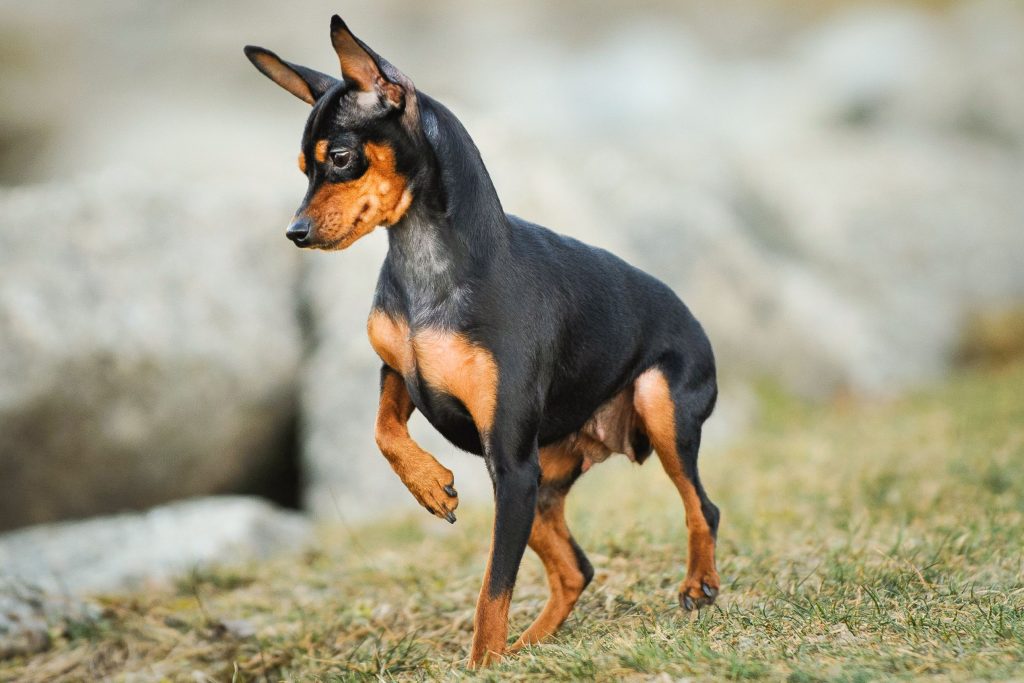
Exercise Needs
Miniature Pinschers are a highly energetic breed that require plenty of exercise to keep them happy and healthy. They are known for their agility and love to run, jump and play. A daily walk of at least 30 minutes is recommended, but they will benefit from additional exercise such as playing fetch or going for a run. It is important to note that Miniature Pinschers have a high prey drive and should always be kept on a leash or in a secure area to prevent them from chasing after small animals. Additionally, they are prone to weight gain, so regular exercise is crucial to maintain a healthy weight.
In addition to physical exercise, Miniature Pinschers also require mental stimulation to prevent boredom and destructive behavior. They are intelligent dogs that enjoy learning new tricks and participating in obedience training. Puzzle toys and interactive games can also provide mental stimulation and prevent boredom. It is important to note that Miniature Pinschers can be stubborn and may require patience and consistency during training. Overall, providing both physical and mental exercise is essential for the well-being of this active breed.
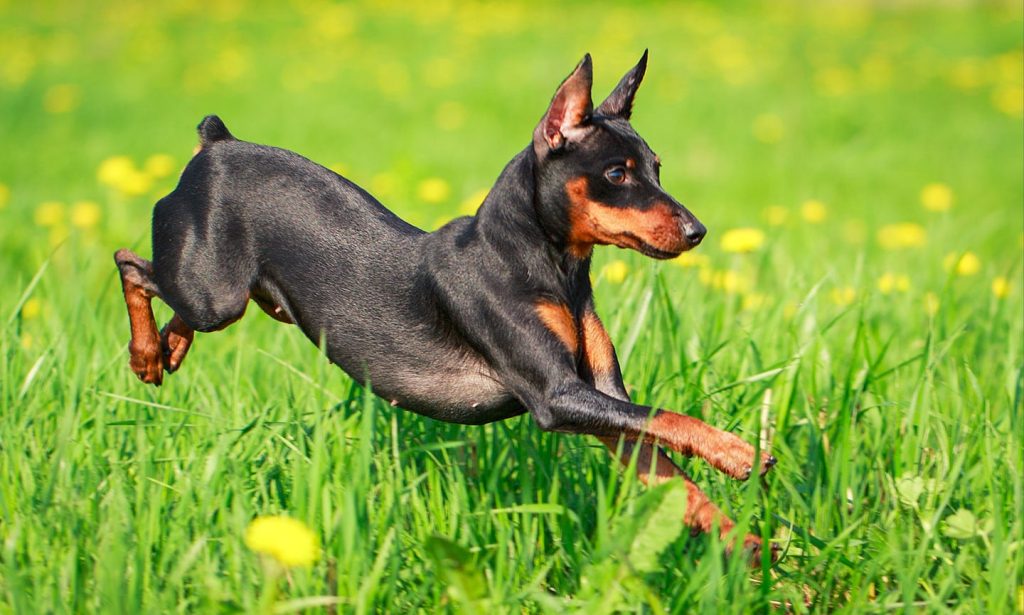
Suitability for a Multi-Pet Family
Miniature Pinschers have a reputation for being territorial and possessive, which can sometimes lead to conflicts with other pets in the household. However, with proper socialization and training, they can learn to coexist peacefully with other animals. It’s important to introduce them to other pets gradually and supervise their interactions to prevent any aggressive behavior. Additionally, providing each pet with their own space and resources can help minimize any potential conflicts.
Housing Requirements
Miniature Pinschers require a living space that is comfortable and safe for their small size. They need a warm and cozy indoor environment that is free from drafts and extreme temperatures. The ideal temperature range for a Miniature Pinscher is between 18-22°C. They also require a comfortable bed or crate that is big enough for them to stretch out in and feel secure. Miniature Pinschers are active dogs and need regular exercise, so access to a secure outdoor space is important. A small garden or yard with a secure fence is ideal for them to run around and play in.
In terms of nutrition, Miniature Pinschers require a balanced diet that is appropriate for their size and activity level. They are prone to obesity, so it is important to monitor their food intake and provide them with regular exercise. They also require access to fresh water at all times. Miniature Pinschers have short, smooth coats that require minimal grooming. However, they do shed, so regular brushing can help to keep their coat healthy and shiny. They also require regular dental care to prevent dental problems. Overall, Miniature Pinschers are a low-maintenance breed that can thrive in a variety of living environments as long as their basic needs are met.
Summary
Miniature Pinschers make great pets for active individuals or families who are looking for a small dog that is full of energy and personality. They are known for their intelligence and trainability, making them a good choice for those who enjoy teaching their pets new tricks. While they are small in size, they have a big personality and require plenty of exercise and mental stimulation to keep them happy and healthy. They are also known for their loyalty and affection towards their owners, making them a great companion for those who are looking for a loving and devoted pet.
Miniature Pinscher Dog FAQS
Miniature Pinschers can be stubborn and require consistent training and positive reinforcement.
Miniature Pinschers can adapt well to apartment living as long as they get enough exercise and mental stimulation.
Miniature Pinschers can be good with children if they are socialized properly and trained to interact with them.
Miniature Pinschers are prone to certain health issues such as patellar luxation and Legg-Calve-Perthes disease.
Miniature Pinschers have a short, smooth coat and do not shed excessively.
Miniature Pinschers have a lifespan of 12-14 years on average.
Miniature Pinschers need at least 30 minutes of exercise per day, such as a brisk walk or playtime in a fenced yard.
Miniature Pinschers only need occasional brushing and bathing as needed.
Miniature Pinschers usually grow to a height of 25-30 cm.
The average weight of a Miniature Pinscher is between 3-5 kg.
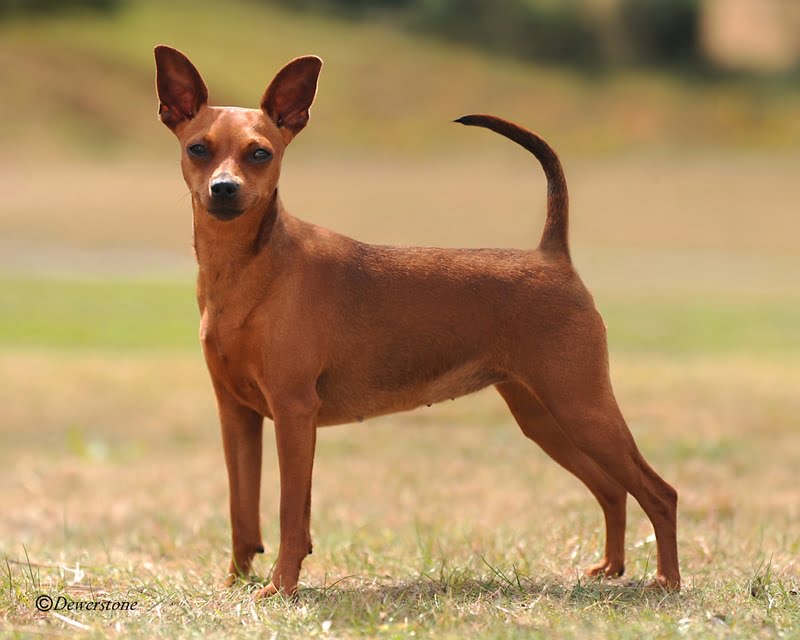
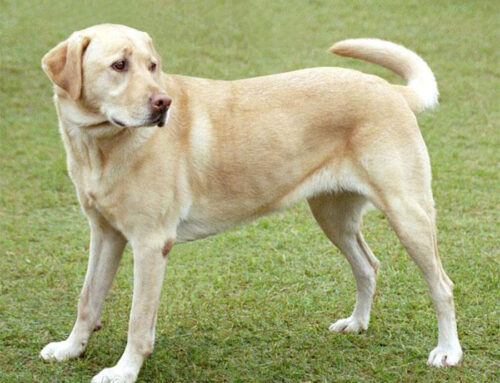
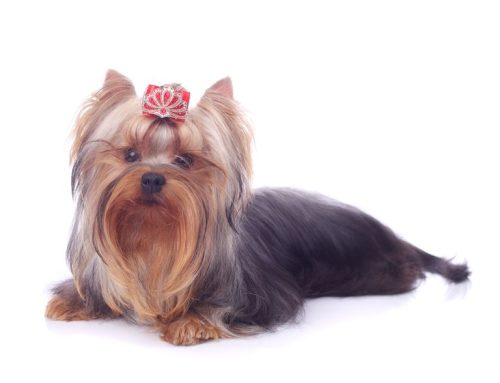
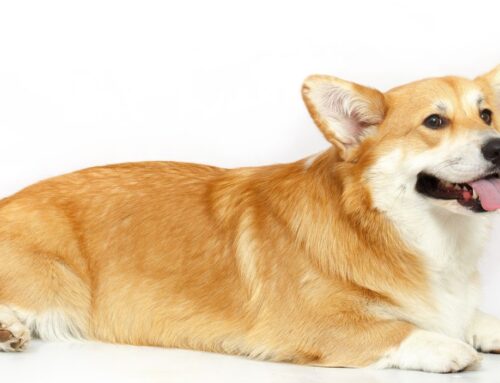

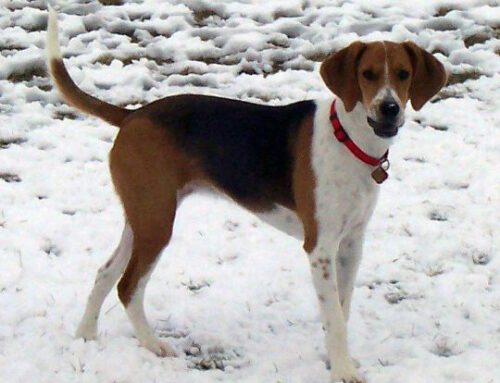
Leave A Comment